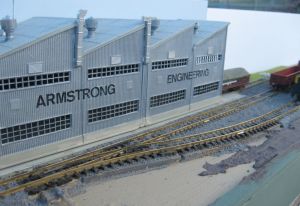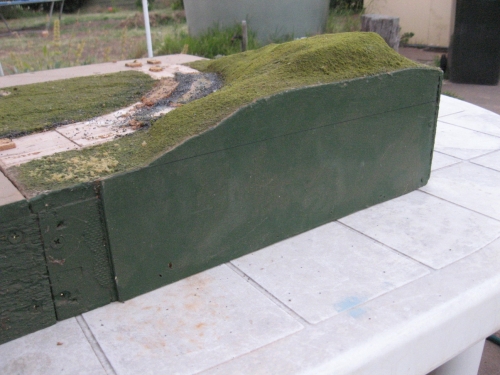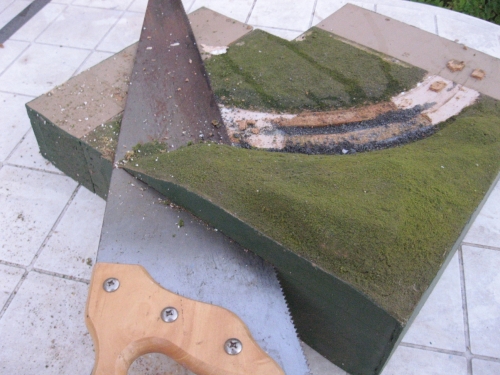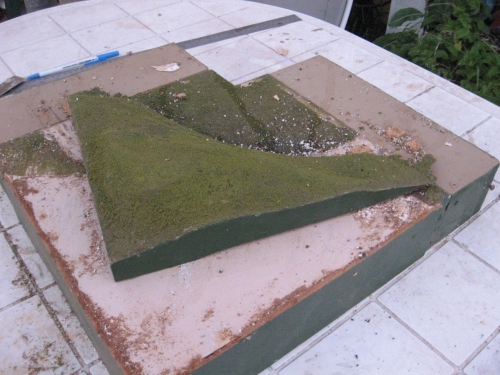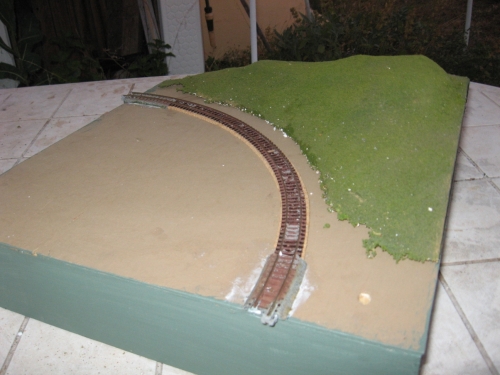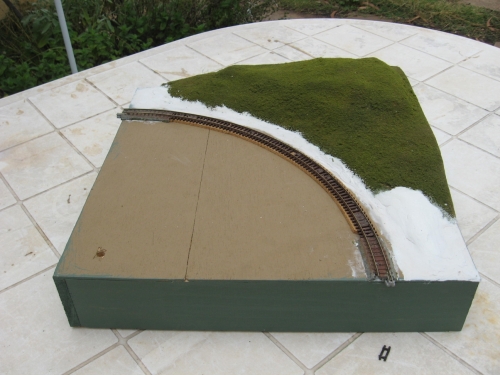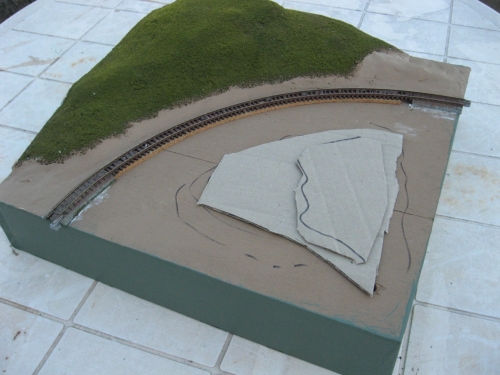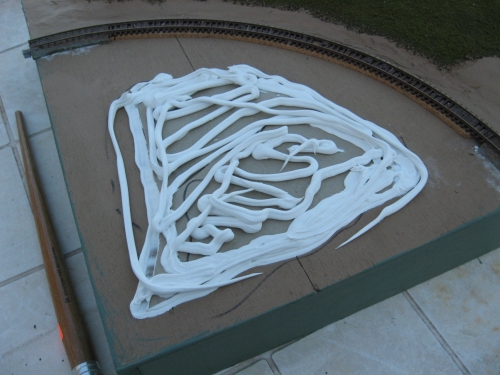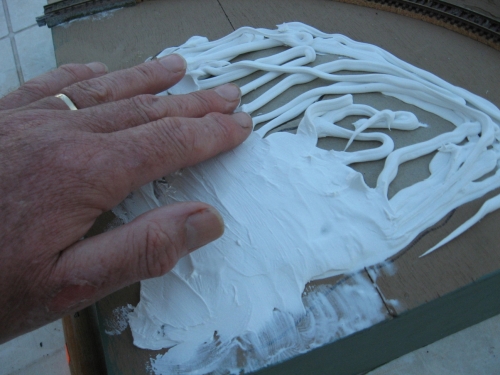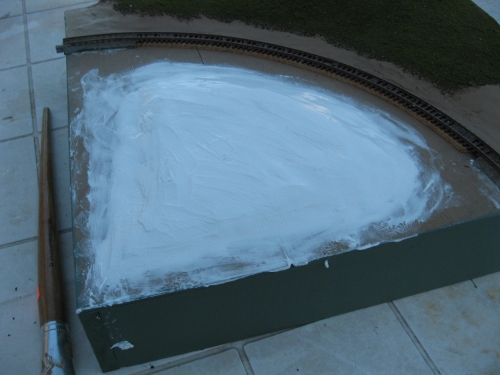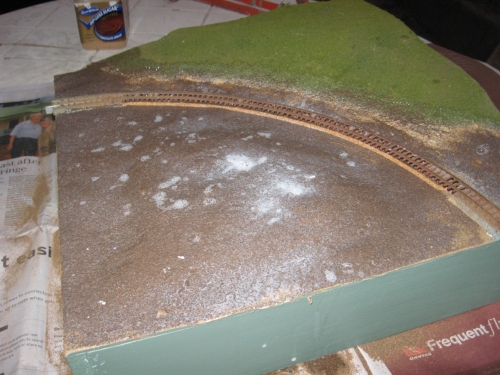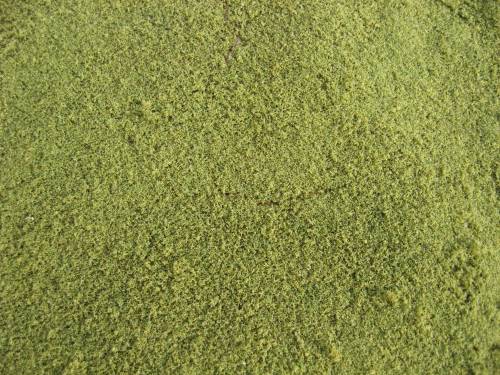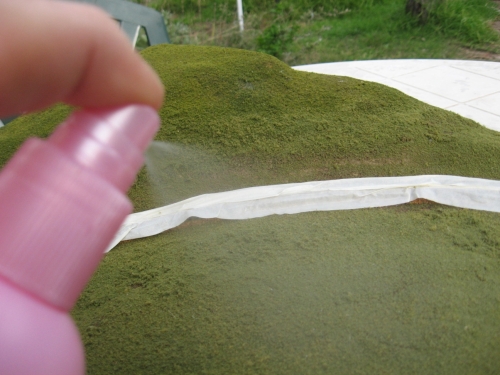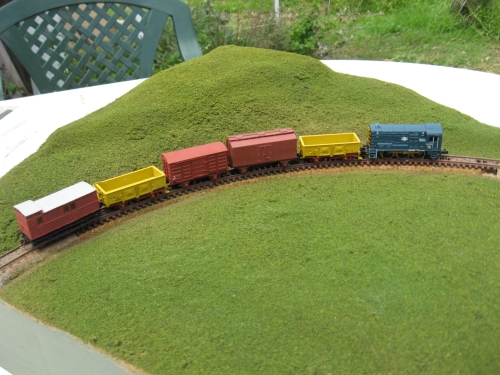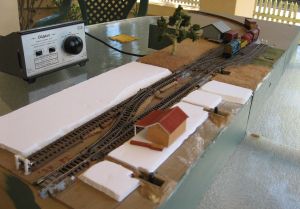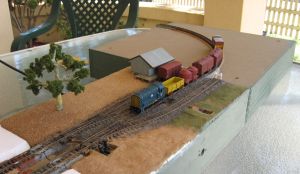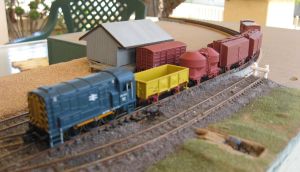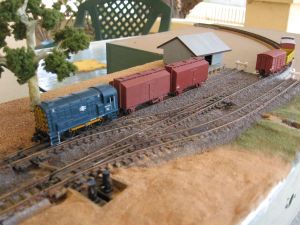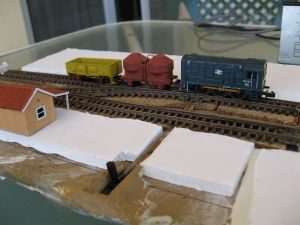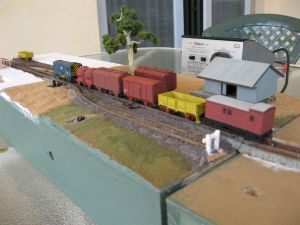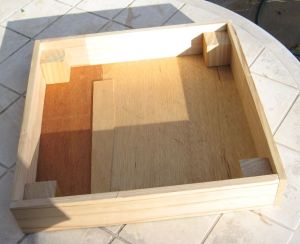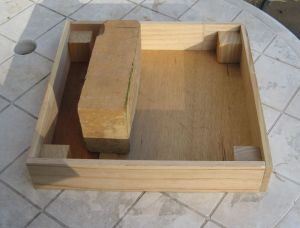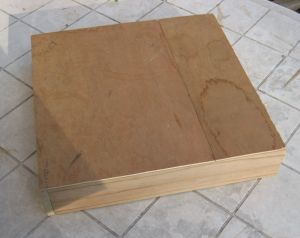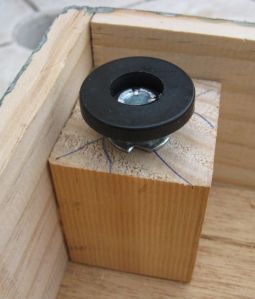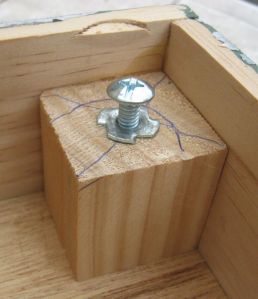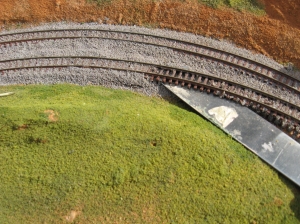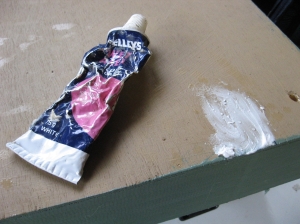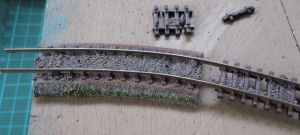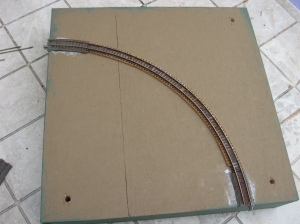G’day again. In both the model and real world railway rollingstock have the uncomfortable, inconvenient, and very dangerous habit of rolling of the end of the tracks unless there is something there to stop them. The answer is to place something at the end of the track to stop this happening. Railways all over the world have worked on various designs depending upon finances and materials available, the likely hood of a runaway or over run, and the momentum of any likely offender(s). These devices can be called `bumpers’, `track bumpers’, ‘buffers’, ‘bufferstops’, and probably a few other names that I have yet to hear. At the bare minimum they can be simply a pile of dirt or old ballast over the rails or an old sleeper or short section of rail fixed down across the running rails and placed at the end of a low use siding. At the other end of the spectrum they can be hydraulic/oil filled shock absorbing structures placed in a busy passenger station. Between these two extremes is a whole continuum of designs, materials and construction methods.
One of the standard designs of the old Australian state government run Victorian Railways can be found at Mark Bau’s Victorian Railway web site:
http://www.victorianrailways.net/infastuct/infastructhome.html
hiding amongst the `F Series’ plans as F 243b.
Using Google Sketch Up I have made a drawing of the basic dimensions for a 1:160 scale model. Click to open the following file.
VR Buffer stop draft 4
This design fits BETWEEN the rails and BETWEEN the final sleepers at the end of the track. Hence the 10mm extreme width of the pair of posts for VR broad gauge. For 9mm gauge I bring the posts closer together and reduce the width of the cross bar by 1mm. The height dimension is from the TOP of the SLEEPERS.
My first construction effort is shown below. The upright posts were cut from bamboo `kebab’ skewers that are about 3mm in diameter. The cross bar is from 1mm and 2mm thick balsa wood sheet I had in the offcuts box. The Kato Unitrack had already had a thin layer of Woodland Scenics ballast stuck down and so the drill was deflected slightly on one side and didn’t go as close to the rail as I needed it to, but it still came out O.K. for a first effort.

This the view from the other side. I need to add another coat of white paint:

The following photo shows a `jig’ that I made out of a 15mm long piece of Evergreen Styrene 6.5mm(1/4 inch) square tube plus some 1mm (0.040″) thick styrene add-ons. This makes placing and assembling the bufferstop very much easier and faster. In this photo the jig is reversed in relation to the bufferstop so that you can see the `ledge’ I created to position the height of the cross beam.

The view below shows the bottom of the jig with a 9mm long piece of styrene centrally located on it to fit between the rails and hold the jig in place on the track. As you can see in the view above.

The next photo is an end view of the jig. The top of the posts scales out to 9.5mm above the top of the SLEEPERS. The code 80 rail is 2mm high, which means that the top of the posts is 7.5mm above the top of the rails. Adding a piece of 1mm (0.040″) thick styrene on top of the Evergreen 6.5mm square tube gives us that desired height above the rails. The bottom surface of the cross bar has to be 3.5mm above the top of the rail, and I added a 3.5mm wide strip of 1mm styrene on the bottom half of one side of the jig to give this height. 
When in use the `smooth’ side of the jig is placed against the posts to align the top of the posts to the correct height for gluing into place before the crossbars are fitted. When the glue has set the jig is reversed and the crossbar is fitted and aligned between the jig and the posts. The glue for the crossbar-post joint has to be sparingly applied at the back of the crossbar to avoid sticking the jig to the bufferstop. The cross bar height lines up with the MicroTrains knuckle coupler height.
When the glue has set the two small blocks at the end of the crossbar can be applied.
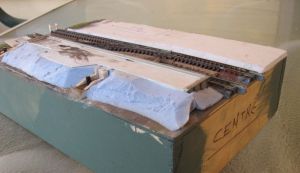 In the following 2 photos you can see how I am making room for a small gangers’ shed.
In the following 2 photos you can see how I am making room for a small gangers’ shed.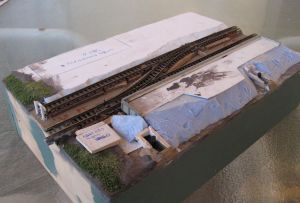 You can also see in the above and below photos that I am experimenting with alternative scenic material for soil. This is bought about by the decision to model the Otways area of Victoria where the soil is very much more brown than what I was first contemplating. This will mean a reworking of the other station module’s scenery.
You can also see in the above and below photos that I am experimenting with alternative scenic material for soil. This is bought about by the decision to model the Otways area of Victoria where the soil is very much more brown than what I was first contemplating. This will mean a reworking of the other station module’s scenery.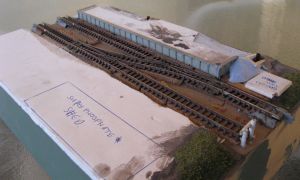 In real-time reality I am a bit further on scenically than these photos depict and hopefully I will update you with more photos in a week or two.
In real-time reality I am a bit further on scenically than these photos depict and hopefully I will update you with more photos in a week or two.





